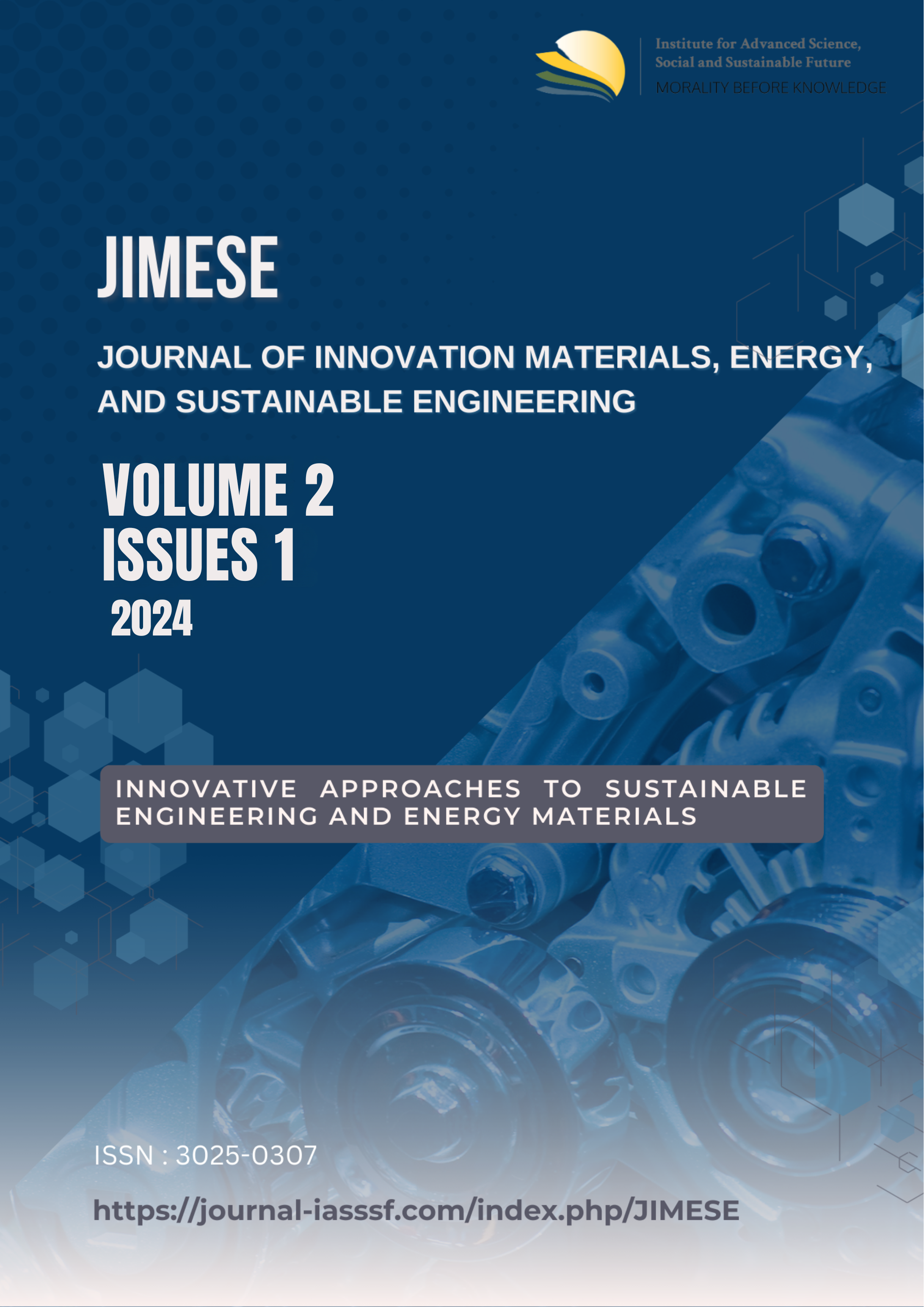Analysis of the effect of Boezem development as flood control
DOI:
https://doi.org/10.61511/jimese.v2i1.2024.978Keywords:
boezem, community perception, community participation, flood controlAbstract
Background: Flooding is a frequent problem in Dukuh Kupang, Surabaya, causing material losses and disrupting daily activities. The construction of boezems, which are retention ponds to temporarily store rainwater, is considered a potential solution to control flooding in this area. This study aims to analyze the effect of boezem construction on flood control in Dukuh Kupang with the hope of providing new insights into the effectiveness of boezem as flood control infrastructure and providing recommendations for improved flood management strategies in the future. Methods: This study used a descriptive method. Data were collected through questionnaires and scored using a Likert scale. Finding: The results revealed that the feasibility score of boezem construction was 60.2%, indicating that boezem construction is considered quite feasible as a flood control solution, but there is still room for improvement. Conclusion: Respondents in this study recognized the benefits of boezem construction, but also expressed concerns or factors that are not yet fully supportive. There is a negative stigma among the community regarding the construction of boezems, which is largely due to the lack of socialization and community participation in the development process. Novelty/Originality of this study: A study on the effectiveness of booze in Surabaya evaluates technical aspects and considers community perceptions, providing a holistic approach to assessing flood control infrastructure.
References
Ashley, R., Gersonius, B., & Digman, C. (2013). Adaptation of urban drainage to climate change: Addressing barriers to implementation. Urban Water Journal, 10(3), 181-190. https://doi.org/10.1080/1573062X.2013.767344
Balahanti, R., Mononimbar, W., & Gosal, P. H. (2023). Analisis Tingkat Kerentanan Banjir Di Kecamatan Singkil Kota Manado. Jurnal Spasial, 11, 69–79. https://ejournal.unsrat.ac.id/index.php/spasial/article/view/51447
Berland, A., Shiflett, S. A., Shuster, W. D., Garmestani, A. S., Goddard, H. C., Herrmann, D. L., & Hopton, M. E. (2017). The role of trees in urban stormwater management. Landscape and Urban Planning, 162, 167-177. https://doi.org/10.1016/j.landurbplan.2017.02.017
Hisyam Erwanto, N., Yulianti, E., & Surbakti, S. (2021). Perencanaan Boezem Dan Pompa Dalam Penangan Banjir Di Kabupaten Pasuruan Jawa Timur. Sondir, 5(2), 1–9. https://doi.org/10.36040/sondir.v5i2.4194
Indriyani, D., Aziz, S. K., & Mubarok, P. M. (2019). Boezem, Pompa, dan Pintu Air sebagai Pengendali Banjir di Kali Balong Kecamatan Tandes Kota Surabaya. Jurnal Aplikasi Teknik Sipil, 17(2), 43. https://doi.org/10.12962/j2579-891x.v17i2.5293
Kazemi, F., Beecham, S., & Gibbs, J. (2009). Streetscape biodiversity and the role of bioretention swales in an Australian urban environment. Landscape and Urban Planning, 92(3-4), 187-197. https://doi.org/10.1016/j.landurbplan.2009.04.001
Rahman, M., Ningsheng, C., Islam, M. M., Dewan, A., Iqbal, J., Washakh, R. M. A., & Shufeng, T. (2019). Flood susceptibility assessment in Bangladesh using machine learning and multi-criteria decision analysis. Earth Systems and Environment, 3, 585-601. https://doi.org/10.1007/s41748-019-00123-y
Saves, F. (2021). Penerapan Ecodrainage Melalui Biopori Di Jalan Dukuh Kupang Surabaya. Pawon: Jurnal Arsitektur, 5(2), 185–200. https://doi.org/10.36040/pawon.v5i2.3468
Utomo, D. D., & Marta, F. Y. D. (2022). Dampak Bencana Alam Terhadap Perekonomian Masyarakat di Kabupaten Tanah Datar. Jurnal Terapan Pemerintahan Minangkabau, 2(1), 92–97. https://doi.org/10.33701/jtpm.v2i1.2395
Woods-Ballard, B., Kellagher, R., Martin, P., Jefferies, C., Bray, R., & Shaffer, P. (2015). The SuDS manual. CIRIA.
Zhang, K., Hwang, Y., & Sweeney, J. (2021). Performance assessment of constructed wetlands for urban stormwater runoff treatment. Water Research, 191, 116809. https://doi.org/10.1016/j.watres.2020.116809
Zhang, S., Lin, Z., Zhang, S., & Ge, D. (2021). Stormwater retention and detention performance of green roofs with different substrates: Observational data and hydrological simulations. Journal of Environmental Management, 291, 112682. https://doi.org/10.1016/j.jenvman.2021.112682
Zhou, H., Li, H., Zhao, X., & Ding, Y. (2021). Emergy ecological model for sponge cities: A case study of China. Journal of Cleaner Production, 296, 126530. https://doi.org/10.1016/j.jclepro.2021.126530
Downloads
Published
How to Cite
Issue
Section
Citation Check
License
Copyright (c) 2024 Pramudya Aridhadinata, Agung Dwi Laksono, Widia Ade Novita, Achmad Faishal Nur Cahyadi, Galuh Ismaya Sari

This work is licensed under a Creative Commons Attribution 4.0 International License.
















